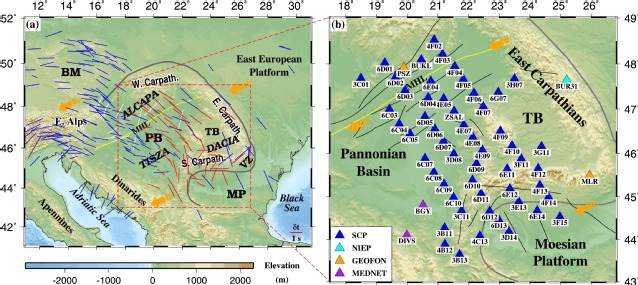Wenkai Song a,b,c, Youqiang Yu a,∗, Cong Shen b,c, Fan Lu b, Fansheng Kong d
a State Key Laboratory of Marine Geology, Tongji University, Shanghai, 200092, China
b Geology and Geophysics Program, Missouri University of Science and Technology, Rolla, MO 65409, USA
c School of Geosciences, China University of Petroleum, Qingdao 266580, China
d Key Laboratory of Submarine Geosciences, State Oceanic Administration & Second Institute of Oceanography, Ministry of Natural Resources, Hangzhou 310012, China
Abstract:
Systematic shear wave splitting (SWS) study was conducted to illuminate the mantle deformation and dynamics in the Carpathian-Pannonian region (CPR) where its tectonic mechanism is still enigmatic and actively debated. We have obtained a total of 1170 SWS measurements using seismic data recorded by 59 broadband seismic stations. The resulting SWS measurements mostly possess NW-SE fast orientations and are mostly oblique or even orthogonal to the trends of major geological features and the absolute plate motions. Spatial coherency of the splitting parameters reveals that the center of the observed anisotropy is most likely originated from the asthenosphere at the depth of about 250 km. Thus, the uniformly NW-SE fast orientations is more likely to represent an asthenospheric flow, which has partially or completely overprinted the anisotropic fabrics developed during the formation of the Pannonian basin. Such an asthenospheric flow is regionally deflected along the edges of continental keels beneath the South Carpathians and the Vrancea zone where complex anisotropy is well-determined and range-parallel fast orientations are revealed based on two-layered fitting of the SWS measurements. Our results combined with previous SWS measurements suggest that the revealed NW-SE asthenospheric flow is actually a key component of the toroidal flow induced by the Adriatic subduction, which dominantly promotes the current upper mantle deformations beneath the CPR and its adjacent regions.

Full Article:https://www.sciencedirect.com/science/article/pii/S0012821X19303279


